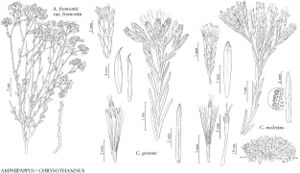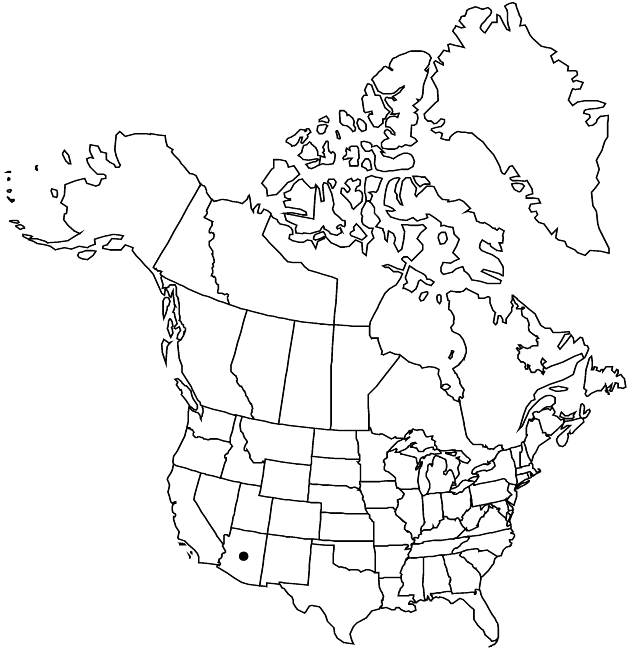Chrysothamnus molestus
Madroño 17: 222. 1964.
Shrubs, 8–20 cm; with woody, highly branched caudices, bark dark gray, highly fibrous with age. Stems ascending, green, ± puberulent, stipitate-glandular. Leaves erect to closely ascending; sessile; blades with ± evident midnerves, linear to narrowly elliptic, 7–20 × 0.7–1.5 mm, sulcate, sometimes apiculate, apices acute, faces moderately puberulent, uniformly stipitate-glandular. Heads in small cymiform to racemiform arrays. Involucres subcylindric, 9–11 × 2.5–3.5 mm. Phyllaries ± 20 in 4–5 series, in 4–5 strong vertical ranks, tan, often with green or dark subapical splotch, midnerves often obscure, linear or lanceolate to elliptic, 2–9 × 0.5–1.3 mm, unequal, outer ± herbaceous, inner chartaceous, strongly keeled, apices acute to rounded, tip cupped, faces of outer glabrous or puberulent. Disc florets 5; corollas 5.5–7.5 mm, lobes 0.9–1.5 mm; style branches 2.7–3.2 mm, appendages 1–1.7 mm. Cypselae tan, elliptic, 4.2–6 mm, mostly 5-ribbed, faces glabrous, sparsely glandular; pappi tan, 6–7.5 mm. 2n = 18.
Phenology: Flowering late summer–fall.
Habitat: Rocky soils, mostly on limestone pinyon-juniper woodland
Elevation: 1800–2400 m
Discussion
Chrysothamnus molestus is known only from Coconino County. It is in the Center for Plant Conservation’s National Collection of Endangered Plants.
Selected References
None.

